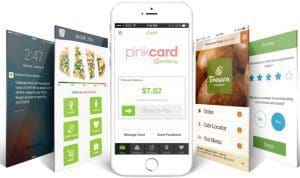6 min read
Three key takeaways from PXUX 2020
This year’s Paytronix User’s Conference was unconventional, to say the least; but thanks to our incredible clients, the first-ever virtual PXUX was...
Platform
What is Paytronix Guest Engagement Suite?
Combining online ordering, loyalty, omnichannel messaging, AI insights, and payments in one suite. Paytronix delivers relevant, personal experiences, at scale, that help improve your entire digital marketing funnel by creating amazing frictionless experiences.
A Complete Guest Engagement Suite
Online Ordering
Acquire new customers and capture valuable data with industry leading customization features.
Loyalty
Encourage more visits and higher spend with personalized promotions based on individual activity and preferences.
Catering
Grow your revenue, streamline operations, and expand your audience with a suite of catering tools.
CRM
Build great customer relationships with relevant personal omnichannel campaigns delivered at scale.
Artificial Intelligence
Leverage the most data from the most customer transactions to power 1:1 marketing campaigns and drive revenue.
Payments
Drive brand engagement by providing fast, frictionless guest payments.
Solutions
Paytronix Guest Engagement Solutions
We use data, customer experience expertise, and technology to solve everyday restaurant and convenience store challenges.
FlightPaths are structured Paytronix software onboarding journeys designed to simplify implementation and deliver maximum ROI.
Customer Success Plans (CSPs) are tiered service offerings designed to help you get the most from your Paytronix software, whether you prefer self-guided support or hands-on partnership.
Contactless Experiences
Accommodate your guests' changing preferences by providing safe, efficient service whether dining-in or taking out.
Customer Insights
Collect guest data and analyze behaviors to develop powerful targeted campaigns that produce amazing results.
Marketing Automation
Create and test campaigns across channels and segments to drive loyalty, incremental visits, and additional revenue.
Mobile Experiences
Provide convenient access to your brand, menus and loyalty program to drive retention with a branded or custom app.
Subscriptions
Create a frictionless, fun way to reward your most loyal customers for frequent visits and purchases while normalizing revenues.
Employee Dining
Attract and retain your employees with dollar value or percentage-based incentives and tiered benefits.
Order Experience Builder
Create powerful interactive, and appealing online menus that attract and acquire new customers simply and easily.
Loyalty Programs
High-impact customizable programs that increase spend, visit, and engagement with your brand.
Online Ordering
Maximize first-party digital sales with an exceptional guest experience.
Integrations
Launch your programs with more than 450 existing integrations.
Loyalty Programs
Deliver the same care you do in person with all your digital engagements.
Online Ordering
Drive more first-party orders and make it easy for your crew.
Loyalty Programs
Digital transformations start here - get to know your guests.
Online Ordering
Add a whole new sales channel to grow your business - digital ordering is in your future.
Integrations
We work with your environment - check it out
Tobacco Reporting
Comply with AGDC 2026 DTP Requirements
Company
We are here to help clients build their businesses by delivering amazing experiences for their guests.
Meet The Team
Our exceptional customer engagement innovations are delivered by a team of extraordinary people.
News/Press
A collection of press and media about our innovations, customers, and people.
Events
A schedule of upcoming tradeshows, conferences, and events that we will participate in.
Careers
Support
Paytronix Login
Order & Delivery Login
Resources
Paytronix Resources
Learn how to create great customer experiences with our free eBooks, webinars, articles, case studies, and customer interviews.
FlexPoint Service Catalog
Access FlexPoints are a cost-effective, flexible way to access our value-added services, to ensure you get greater impact from your Access software solution.
See Our Product In Action
E-Books
Learn more about topics important to the restaurant and c-store customer experience.
Reports
See how your brand stacks up against industry benchmarks, analysis, and research.
Blog
Catch up with our team of in-house experts for quick articles to help your business.
Case Studies
Learn how brands have used the Paytronix platform to increase revenue and engage with guests.
Unlock loyalty strategies that 3 out of 4 restaurants use to boost engagement by 40% without adding staff.
2 min read
Mar 21, 2017

The only way to know if your loyalty or other guest-engagement campaigns are succeeding is to track them and analyze your results. Unfortunately, even numbers that appear straightforward can contain hidden implications.
Depending on how you look at your data, a campaign can seem like a roaring success or a misfire. But sometimes it requires further analysis to determine if your initial assessments are accurate.
In worst-case scenarios, you may discover that a campaign you decide to run again based on previous positive data had been a misfire the entire time. Not only are you producing unfavorable results, but you are also wasting time, manpower, and money.
For example, let’s say you set up a “We Miss You” campaign. These are fairly common loyalty program campaigns in which you send out an offer to people who have not visited your stores in a while to encourage them to return. After deciding that you’re going to set up a campaign for people who have not visited in 60 days, you send them a coupon for 15 percent off an entrée.
Once you’ve run the campaign and examined your results, the numbers look great. Many guests who had not visited in 60 days made visits during the campaign period and used the coupon you sent them. It seems like the campaign was a resounding success!
But was it truly successful? Sometimes results in campaigns like this are deceiving.
Within that group of guests who hadn’t visited in 60 days, there are bound to be people who consistently go more than 60 days between visits. Maybe they visit every 61 days or every 70 or 75. This means they were almost ready to come in anyway, and if they used your coupon as a result of the “We Miss You” campaign, you may be cannibalizing sales and losing money on this segment.
Also, remember that the period you’re using for measurement before that visit – those 60 days – had zero visits. Relatively speaking, the number of visits during the campaign can only go up. Some people in that group are sure to come in, and since you’re comparing results against a period with zero visits, your campaign will look like a success.
So, how do you prevent a problem like this? The best method is using test and control groups.
Instead of mailing to your entire lapsed list, mail to a portion of it, and at the end of the campaign, compare the behavior of your test (coupon) group against that of your control (non-coupon) group. If your test group came in more frequently than your control group, you may have a winning campaign on your hands. But if the test and control groups visited at about the same frequency and spent about the same amount, your campaign didn’t make much of a difference.
Testing helps you validate your results, and testing with a smaller segment first helps keep you from wasting (or losing) money on a bigger campaign.
Of course, this is just one example. There are inherent data flaws in the way many companies run visit challenges and other popular guest-engagement campaigns. The problem is that these flaws are hard to detect and impossible to fix once a program has launched.
If you’d like to make sure your programs are built correctly and you’re interpreting your data in the right way, we encourage you to watch our free on-demand webinar called “How Your Guest Data Can Trick You.”
Lee Barnes, the head of our Data Insights team, takes you through some of the biggest mistakes that companies make when setting up campaigns and analyzing data, and he shows you how to avoid having the same flaws in your own campaigns.
Check out our free streaming webinar before you even begin brainstorming your next promotion to ensure that your data and your revenue are in line for success. Click here to access the presentation.

6 min read
This year’s Paytronix User’s Conference was unconventional, to say the least; but thanks to our incredible clients, the first-ever virtual PXUX was...

2 min read
Your guests are going through their phones right now and deleting apps they don’t use. Why would they keep yours?

3 min read
Every restaurant understands that attracting new customers is crucial for sustained success. But even though the millennial generation begins with...